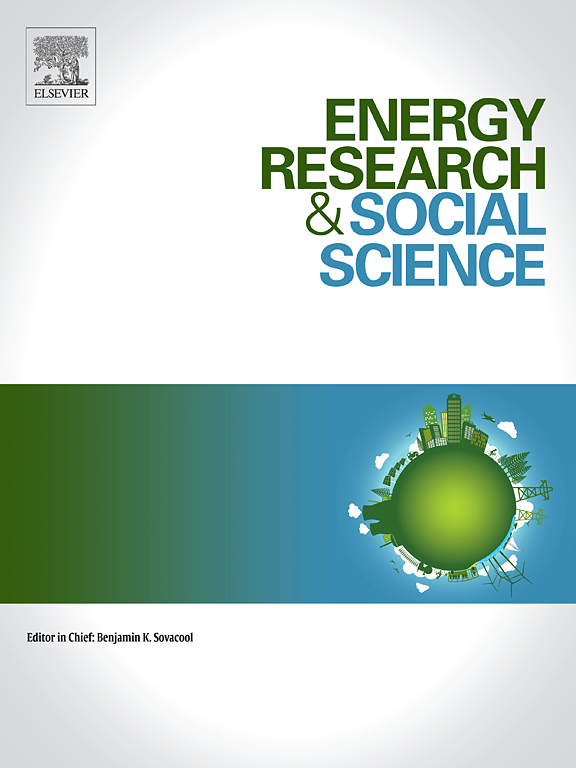Integrating energy efficiency within housing systems: A systems approach to map retrofit decision-making among non-profit housing actors
IF 6.9
2区 经济学
Q1 ENVIRONMENTAL STUDIES
引用次数: 0
Abstract
Repair and retrofit of social and affordable housing (also known as community housing) improves living conditions and reduces residential greenhouse gas (GHG) emissions. Many policies and programs target the condition and energy efficiency of these buildings, often characterized by deferred maintenance. These policies are critical for mitigating climate change and preserving affordable housing, especially for vulnerable people. However, their effectiveness is constrained by the complexity of urban social housing systems, given overlapping jurisdictions and the diversity of actors, policy domains, regional climates, and energy systems. Non-profit housing actors primarily make asset management and maintenance decisions to provide safe, affordable, and accessible housing – decisions that can lead to energy efficiency retrofits. However, retrofit decision-making is a dynamic process of negotiation between actors and materials evolving over several stages. To design integrated and transformative policies, understanding and comparing systems shaping these decision-making processes is essential.
Using a systems approach and mixed methods we: 1) identify materials and broader system elements influencing early-stage decision-making from the perspectives of community housing actors; 2) map the strength of these influencing factors across four early stages of the retrofit decision-making process; and 3) compare how local contexts shape the influential factors in two contrasting systems, Saskatchewan (SK) and British Columbia (BC), Canada. We identify 16 influencing factors and map them across four project stages: identification, prioritization, design, and approvals. Building issues, funding availability, and impact on residents are key drivers, though factors vary across stages and depend on local contexts. We conclude with policy and program recommendations.
求助全文
约1分钟内获得全文
求助全文
来源期刊

Energy Research & Social Science
ENVIRONMENTAL STUDIES-
CiteScore
14.00
自引率
16.40%
发文量
441
审稿时长
55 days
期刊介绍:
Energy Research & Social Science (ERSS) is a peer-reviewed international journal that publishes original research and review articles examining the relationship between energy systems and society. ERSS covers a range of topics revolving around the intersection of energy technologies, fuels, and resources on one side and social processes and influences - including communities of energy users, people affected by energy production, social institutions, customs, traditions, behaviors, and policies - on the other. Put another way, ERSS investigates the social system surrounding energy technology and hardware. ERSS is relevant for energy practitioners, researchers interested in the social aspects of energy production or use, and policymakers.
Energy Research & Social Science (ERSS) provides an interdisciplinary forum to discuss how social and technical issues related to energy production and consumption interact. Energy production, distribution, and consumption all have both technical and human components, and the latter involves the human causes and consequences of energy-related activities and processes as well as social structures that shape how people interact with energy systems. Energy analysis, therefore, needs to look beyond the dimensions of technology and economics to include these social and human elements.
 求助内容:
求助内容: 应助结果提醒方式:
应助结果提醒方式:


